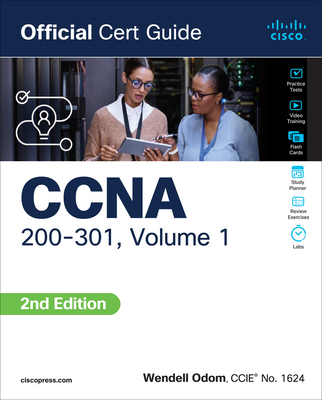VMware vSphere 6.5 Optimize, Upgrade, Troubleshoot Training in Calgary, Canada
Enroll in or hire us to teach our VMware vSphere 6.5 Optimize, Upgrade, Troubleshoot class in Calgary, Canada by calling us @303.377.6176. Like all HSG
classes, VMware vSphere 6.5 Optimize, Upgrade, Troubleshoot may be offered either onsite or via instructor led virtual training. Consider looking at our public training schedule to see if it
is scheduled: Public Training Classes
Provided there are enough attendees, VMware vSphere 6.5 Optimize, Upgrade, Troubleshoot may be taught at one of our local training facilities.
|
We offer private customized training for groups of 3 or more attendees.
|
||
Course Description |
||
| This powerful 5-day class provides an in-depth look at vSphere 6.5. In
this course, cover how to deploy vSphere 6.5, how to optimize it,
including VMs, ESXi hosts, vCenter Server Appliance, networking and
shared SAN storage... with the goal of delivering both scalability and
performance. We show step-by-step how to upgrade or migrate to vCenter
Server Appliance 6.5, how to use VMware Update Manager to upgrade ESXi
hosts and how to use VUM how to upgrade VM virtual hardware. And, we
will also show you how to diagnose, isolate and fix common problems. All
of vSphere Client, Host Client, Web Client and command line tools are
all used to explore, configure, update, investigate and zero in on
performance bottlenecks and trouble spots. Up to 45% of class time is
devoted to labs so concepts, skills and best practices are developed and
reinforced. By the end of the class, attendees will have learned
practical, actionable skills in vSphere design, implementation,
upgrading, sizing, scalability, performance optimization and troubleshooting.
Course Length: 5 Days
Course Tuition: $3250 (US) |
||
Prerequisites |
|
| This is not a beginner level course. Attendees should have experience installing and configuring and administering vSphere 5.x or 6.x components including ESXi, vCenter server or vCenter Server Appliance. | |
Course Outline |
Chapter 1 – Install, Configure and Secure ESXi 6.5
Chapter 2 – Virtual and Physical Networking
Chapter 3 – Advanced Networking
Chapter 4 – Connecting to and Using NAS Shared Storage
Chapter 5 – Virtual Hardware and Virtual Machines
Chapter 6 – vCenter Server Appliance and Web Client
Chapter 7 – ESXi Command Line Access
Chapter 8 – VM Rapid Deployment using Templates, Clones
Chapter 9 – Use VMware Update Manager to Upgrade ESXi hosts
Chapter 10 – Connecting to Fibre & iSCSI Shared Storage
Chapter 11 – Direct VM to SAN Access with Raw Device Maps
Chapter 12 – VMware File System (VMFS)
Chapter 13 – Storage Profiles
Chapter 14 – Storage Load Balancing with SDRS Clusters
Chapter 15 – VMotion Migration, Cold Migration, Storage VMotion
Chapter 16 – DRS Load Balancing Clusters
Chapter 17 – VMware High Availability Clusters
Chapter 18 – VMware Fault Tolerance
Chapter 19 – Distributed vSwitch Features and Scalability
Chapter 20 – Managing Scalability and Performance
|
Course Directory [training on all levels]
Technical Training Courses
Software engineer/architect, System Admin ... Welcome!
- .NET Classes
- Agile/Scrum Classes
- AI Classes
- Ajax Classes
- Android and iPhone Programming Classes
- Blaze Advisor Classes
- C Programming Classes
- C# Programming Classes
- C++ Programming Classes
- Cisco Classes
- Cloud Classes
- CompTIA Classes
- Crystal Reports Classes
- Design Patterns Classes
- DevOps Classes
- Foundations of Web Design & Web Authoring Classes
- Git, Jira, Wicket, Gradle, Tableau Classes
- IBM Classes
- Java Programming Classes
- JBoss Administration Classes
- JUnit, TDD, CPTC, Web Penetration Classes
- Linux Unix Classes
- Machine Learning Classes
- Microsoft Classes
- Microsoft Development Classes
- Microsoft SQL Server Classes
- Microsoft Team Foundation Server Classes
- Microsoft Windows Server Classes
- Oracle, MySQL, Cassandra, Hadoop Database Classes
- Perl Programming Classes
- Python Programming Classes
- Ruby Programming Classes
- Security Classes
- SharePoint Classes
- SOA Classes
- Tcl, Awk, Bash, Shell Classes
- UML Classes
- VMWare Classes
- Web Development Classes
- Web Services Classes
- Weblogic Administration Classes
- XML Classes
Business Training Courses
Project Managers, Business Analysts, Paralegals ... Welcome!
Upcoming Classes
Gain insight and ideas from students with different perspectives and experiences.
- OPENSHIFT ADMINISTRATION
6 October, 2025 - 8 October, 2025 - Object Oriented Analysis and Design Using UML
20 October, 2025 - 24 October, 2025 - Introduction to Spring 6, Spring Boot 3, and Spring REST
15 December, 2025 - 19 December, 2025 - RED HAT ENTERPRISE LINUX SYSTEMS ADMIN I
3 November, 2025 - 7 November, 2025 - Fast Track to Java 17 and OO Development
8 December, 2025 - 12 December, 2025 - See our complete public course listing






